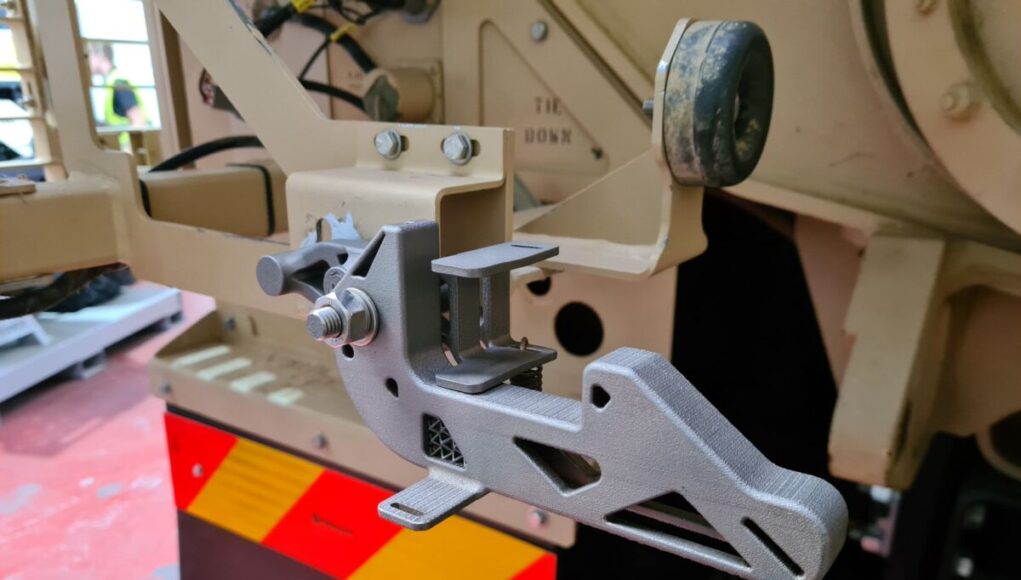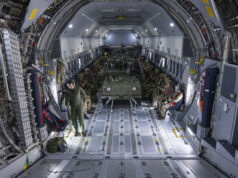The Ministry of Defence (MOD) is looking into the potential of 3D printing to enhance support for the UK Armed Forces, according to a recent update from Defence Equipment & Support (DE&S).
The effort, known as Project TAMPA, is focused on bringing additive manufacturing into the Defence supply chain to improve the availability and reliability of military equipment.
Officials say Project TAMPA was launched after a study identified significant benefits that 3D printing could offer the UK Armed Forces. Led by the UK Strategic Command’s Defence Support team, in collaboration with DE&S, the project seeks to encourage industry adoption of this advanced technology. Charlotte Robinson, Innovation Team Lead at UK Strategic Command, has been overseeing Project TAMPA since its inception in 2021.
“That’s the future vision,” Robinson said, outlining a scenario where global hubs could swiftly print and dispatch quality parts for military use or even send designs directly to units equipped with 3D printers. This capability could be crucial for maintaining equipment during conflicts and could also offer quick access to spare parts, reduce the need for stockpiling, and deliver cost and environmental benefits, she explained.
The project gained traction after a pivotal meeting with the U.S. Marine Corps in Tampa, Florida, where UK Defence officials learned about a contract that included a 3D printing design library for vehicle repairs in remote locations.
“Their success confirmed that additive manufacturing in the UK industrial supply chain should be our priority,” said Alex Champion, who is leading Project TAMPA alongside Richard Hamber at DE&S.
According to the organisation, a key aim of Project TAMPA is to help the defence industry overcome barriers to adopting 3D printing. Robinson noted that the project quickly identified four main challenges: the lack of secure systems for transferring print files, issues surrounding intellectual property and design rights, the need for part certification and qualification, and effective inventory management. Collaborative working groups were set up in 2022 to address these challenges, with efforts continuing, say officials.
DE&S has made progress with the project, including the launch of an initial phase focused on producing and fitting non-safety critical metallic parts. Companies like Thales, Babcock, and NP Aerospace have been involved in this stage, say DE&S representatives. A second phase, targeting safety-critical parts, is currently underway, with a focus on components for air domain platforms and those destined for Ukraine.
In addition to these specific projects, the Future Capability Innovation team is also addressing broader challenges, such as improving spare-part availability and tackling supply chain issues across the MOD, according to DE&S. “We’ve commissioned several reports on spare part availability,” Champion explained, highlighting collaboration with the UK’s High-Value Manufacturing Catapults and various initiatives aimed at raising awareness of 3D printing technology within Defence and the wider industry.
As Project TAMPA advances, DE&S continues to play a crucial role in encouraging industry adoption of 3D printing for Defence applications, say officials. “We will continue to work with DE&S teams to support their suppliers in adopting 3D printing for equipment maintenance,” Champion added. The broader goal, according to Champion, is to see 3D-printed parts integrated into future MOD purchases from the design stage.














Can we 3d print more frigates?
THIS is old technology now, why not go for molecular manufacturing right away. This was pioneered by Richard Feynman in the 1950s and was responsible for Graphene.
It would be interesting to see how additive 3D printing might be used in the fabrication of bombs, grenades, mortar and shell bodies etc.
Could they offer savings in manufacturing times/costs etc?
Isn’t the real benefit the ability to make in situ a key component that has failed? It isn’t really suitable for large scale production line manufacturing of ammunition. Too expensive.
The Ukes are doing it for their drone “bombs” already. This is really old technology now. About five years ago some American produced a 3D printed 1911 that stood testing of over 2000 rounds. I think he got put in prison for his ingenuity.
Some here speak of this as ‘old technology’. Well, it takes a while to mature, reduce in price and trickle into the army.
“The British Army’s journey with additive manufacturing began in earnest in 2019 when the Royal Engineers, during their deployment in South Sudan for Op TRENTON, utilized 3D printing to produce plumbing fittings essential for setting up a field hospital”.
“On 16 July, 2020 5 Bn REME received a visit from CGS, DCGS, and DCap at Army HQ, to speak to them about the 3D Printing ‘Makerspace’ which had been created for them by HoC CSS. 4 of these containers were fielded across the Army in Aug/Sep 2020, and provide the ability to print spare parts, prototypes, and conduct Expedient Repair on the front line”.
Project Brokrr is the Army’s first metal 3D manufacturing capability and have of course since been used by REME on field exercises, the last one being in May this year in Germany, Ex Steadfast Warrior.
As ever a balance between being able to grab something off a shelf / the cost of it being on a shelf / keeping a line open for an old part / quality / volume production of parts etc etc etc
That said there are so many parts that rarely break that keeping those statistical long tail spares in a warehouse is an accountants nightmare.